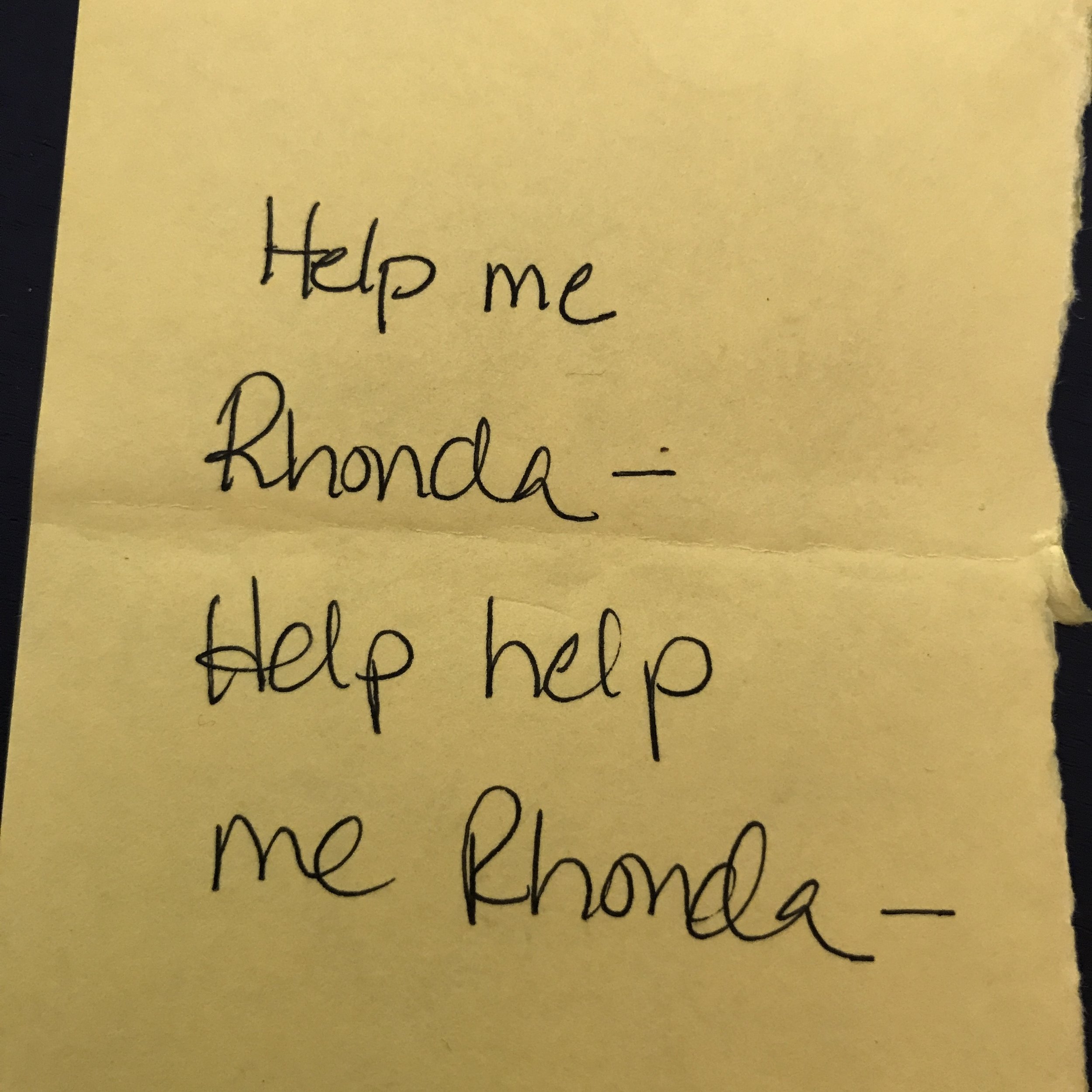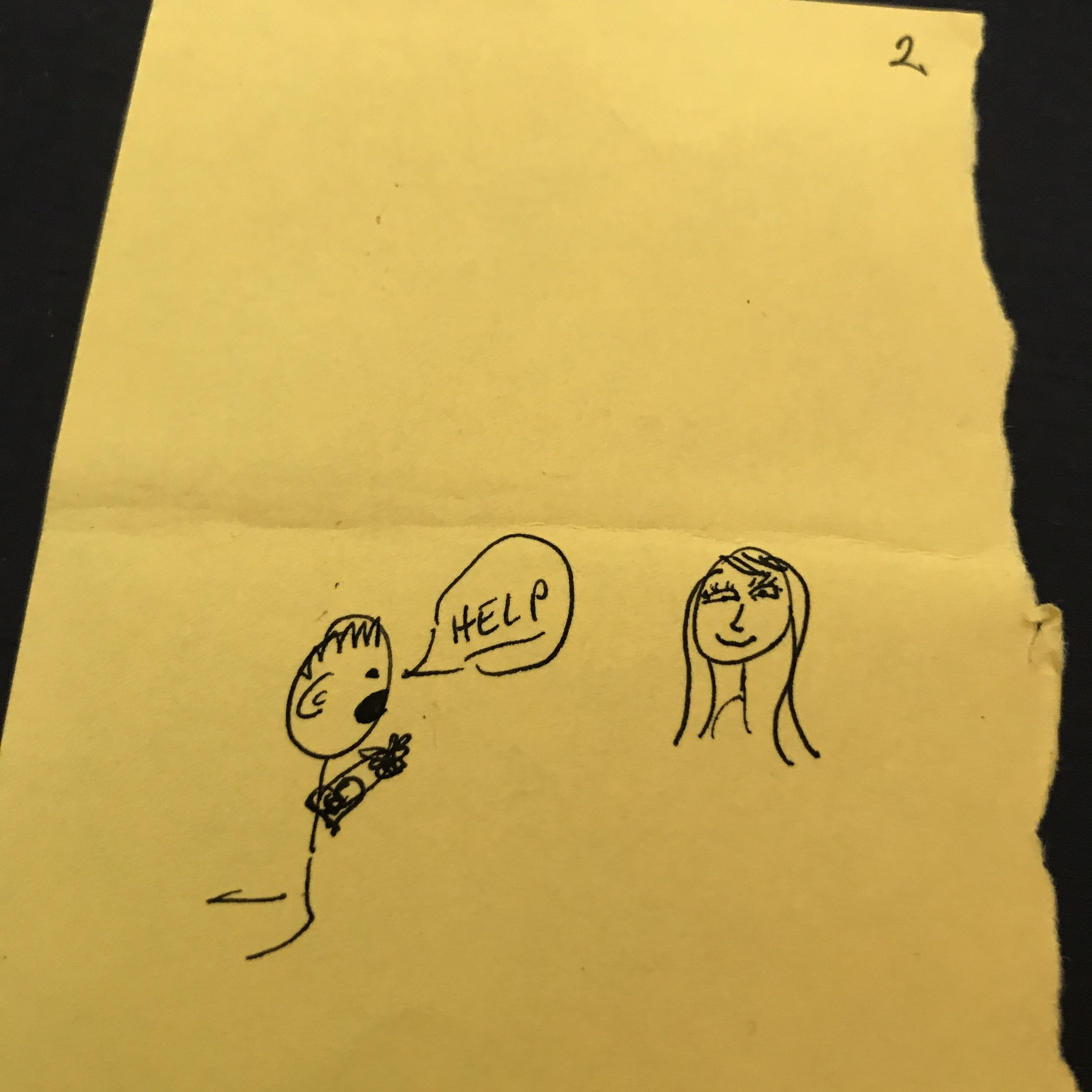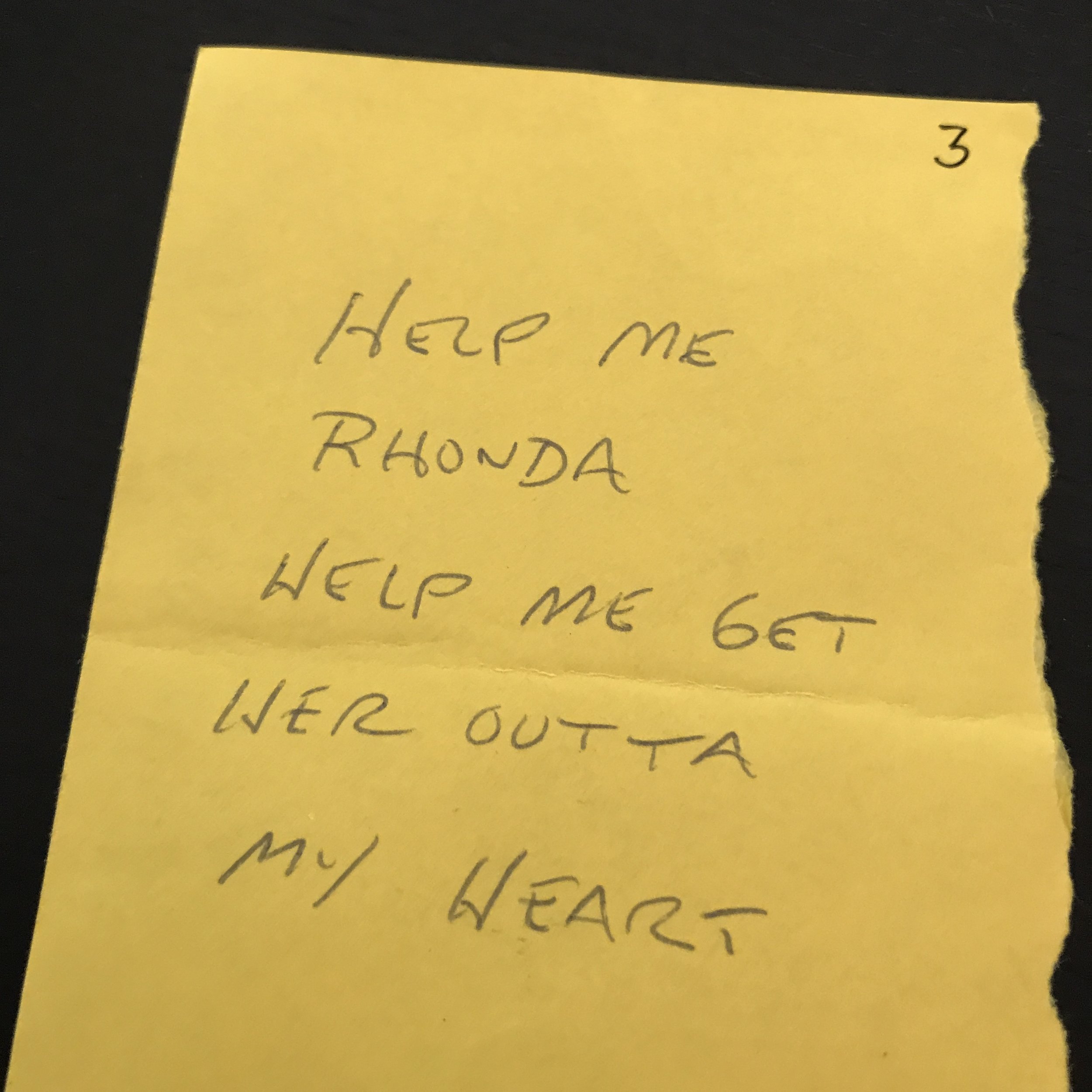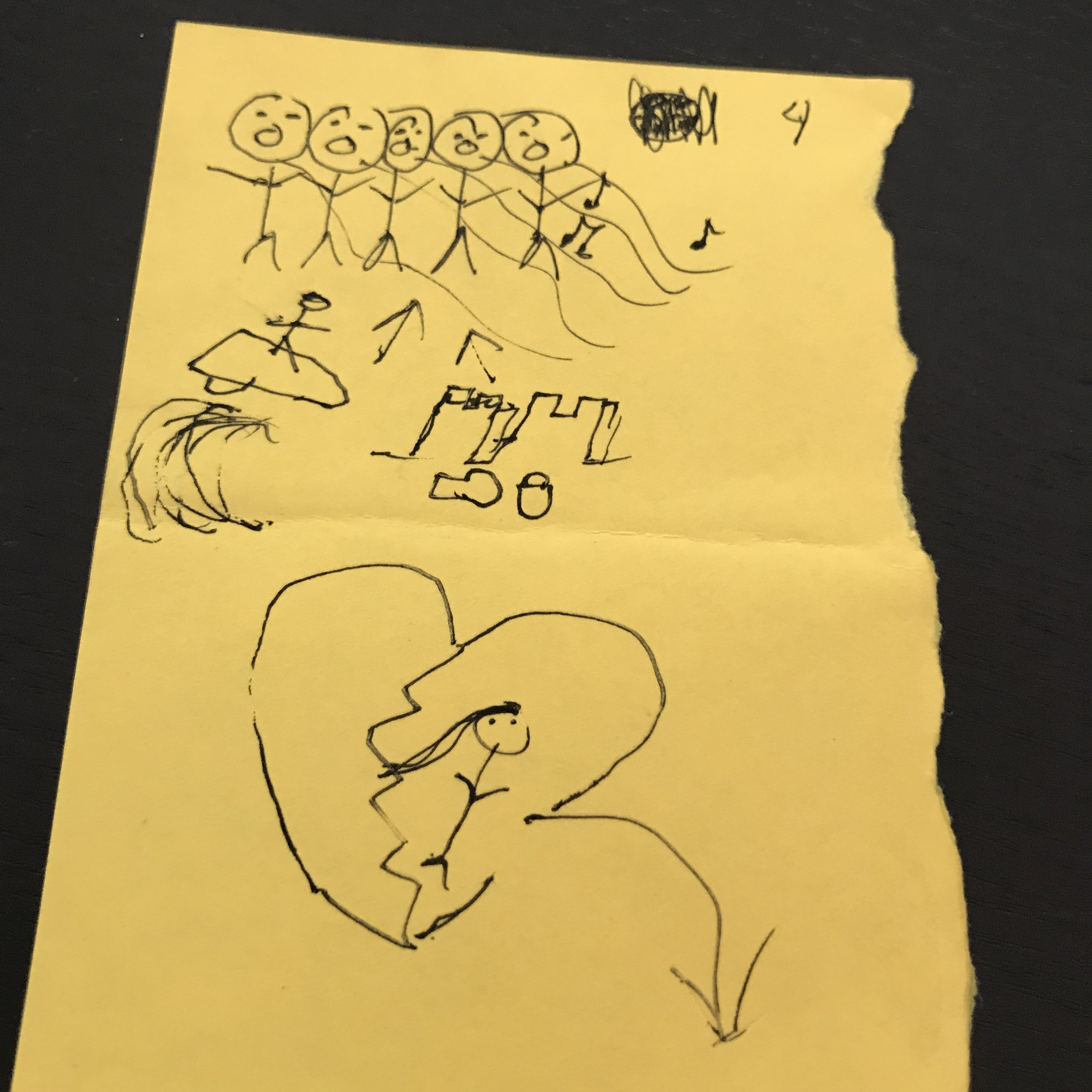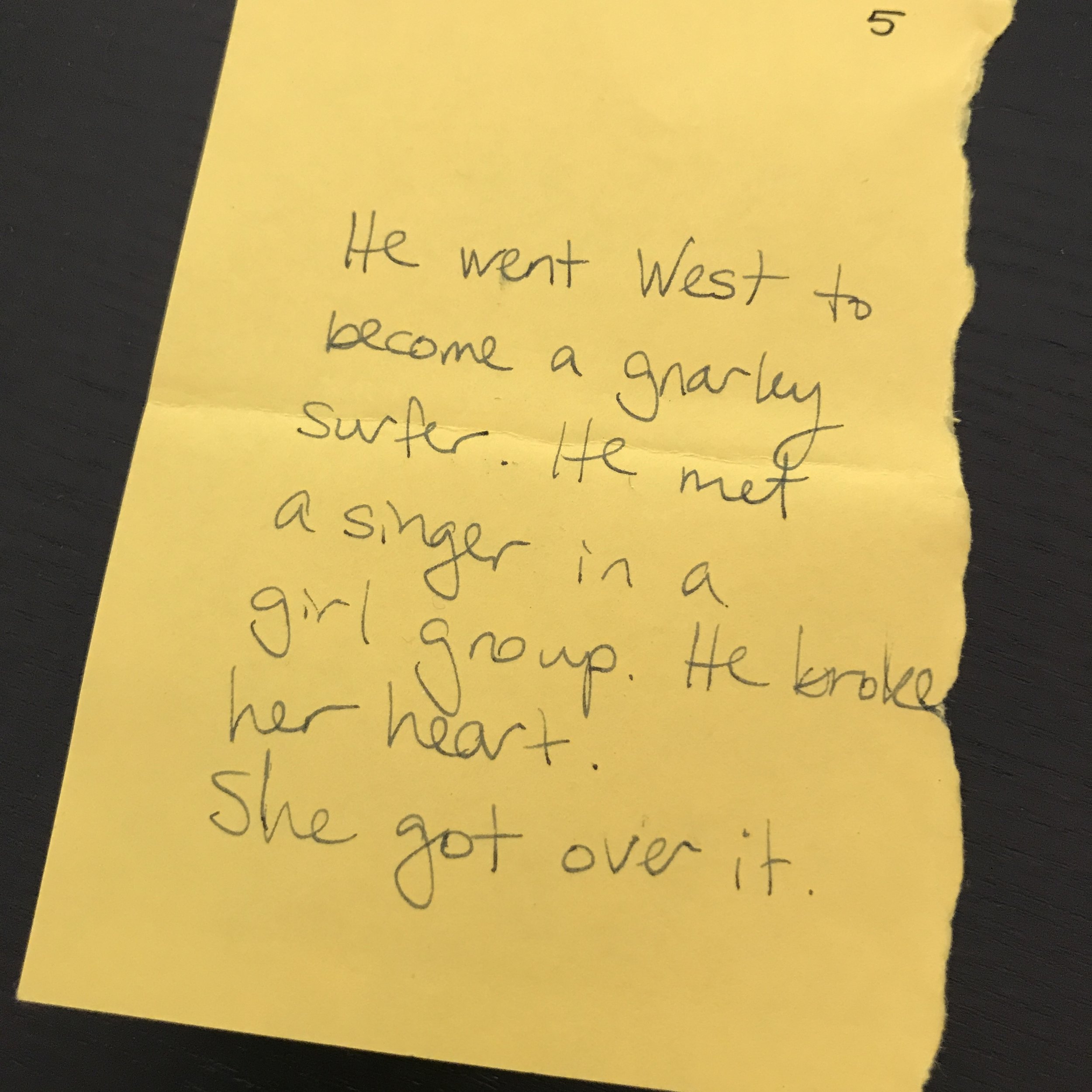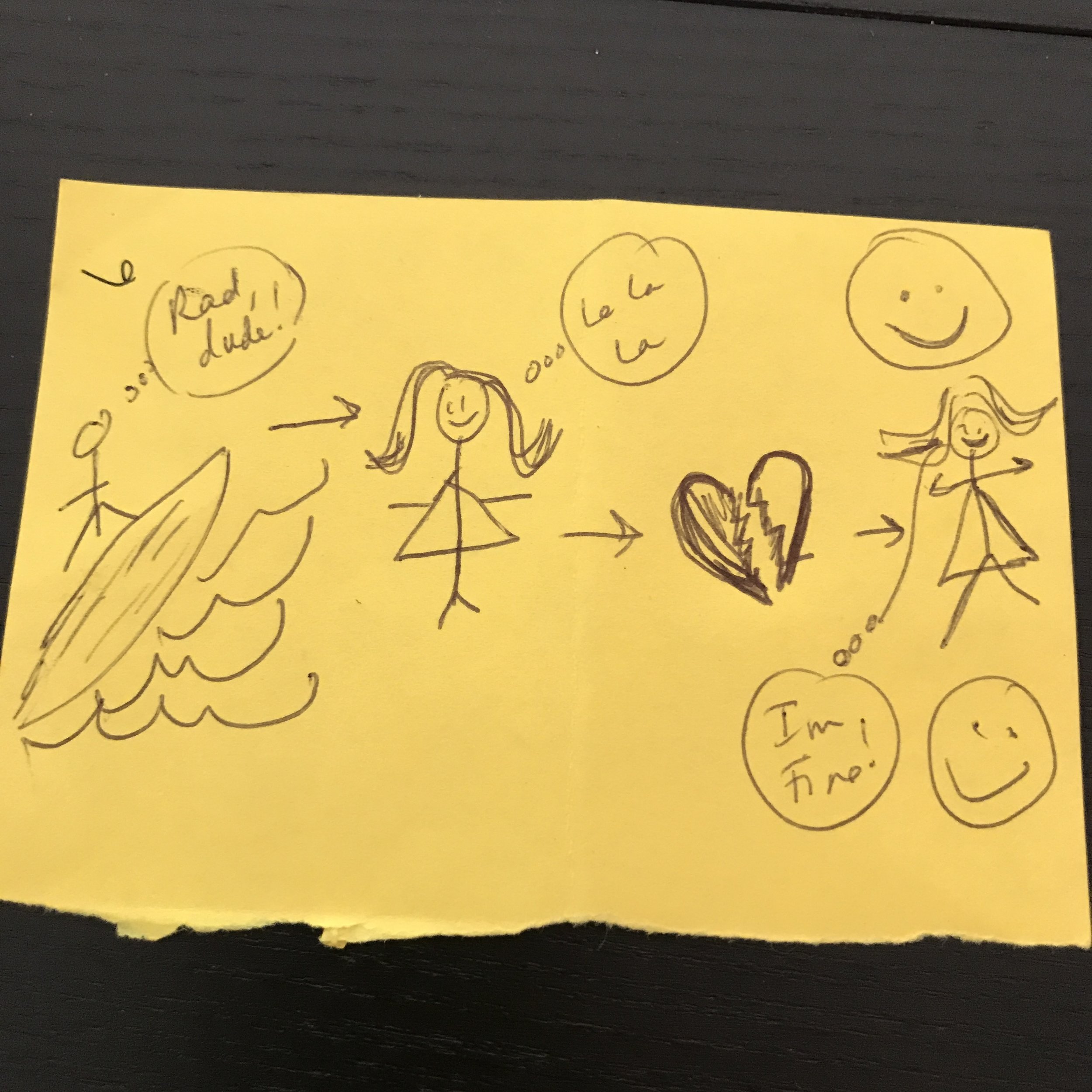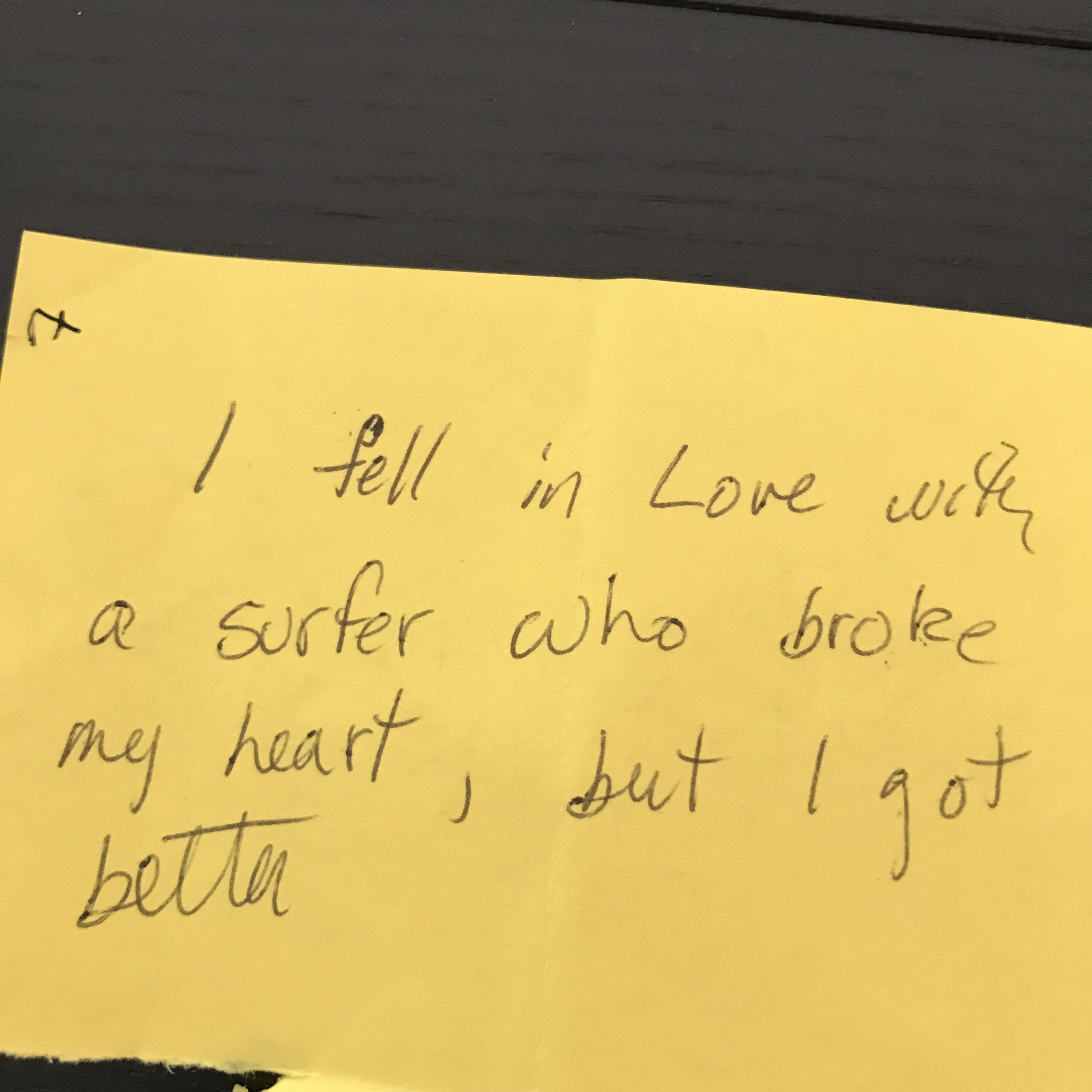A Helpful Sign
This Fourth of July weekend our band of merry backpackers explored the Opal Creek Wilderness of the Mt. Hood National Forest. In the evening, after an 18-mile hike up Whetstone Peak and back to camp, we gathered around the fire pit for a game of paper telephone. Instead of whispering down a line, the message is translated on a stack of papers, alternating between the written word and drawings.
Here’s how it works. The first person writes anything that comes to mind. The person to their left draws what was written on page two. Then the person to that person’s left writes what was depicted on page three, without seeing page one, and so on. The end result was often hilarious. For example, ‘A guilt-free pleasure’ on one end of the line wound up ‘An Exorcism or Jumping Jehoshaphat!’ on the other end.
This game of telephone got me thinking about how we perceive or misperceive the meaning of symbolism from images on book covers to logos. When we interpret a symbolic representation of an idea or thought, we interpret it from our individual perspective. Our heads are filled with meaningful imagery - not letters strung together. The visual representation evokes emotions (hopefully, the desired ones) in us that are influenced by our present condition and/or past experiences. The interpretation of symbols and imagery is personal and ephemeral. So, it would seem that it is hard to predict just how a symbolic message of ‘help’ will be perceived by the viewer.
Take for example one of my first card taken from a popular Beach Boys lyric: “Help me, Rhonda! Help, help me Rhonda.” It popped into my head because while hiking up 2,000+ feet of elevation to the top of Whetstone Peak, my fellow back packer had shared that, as a child, her dance routines were always accompanied by songs of the Beach Boys. Since she was to my left, I figured that she would know how to depict this popular lyric. Really.
There are so many ways she could have depicted ‘Help me, Rhonda’. How often have we all seen visual representations of the meaning ‘help’? A flare over a broke down car? A person wildly waving their hands as they sink? A telephone receiver? A question mark? SOS? When you create content for a billboard or a postcard or event signage that was to be reinterpreted as the sign for help, what would your doodles on paper look like?
Telephone it. When you think you have come up with the clearest, most compelling image for an offer of help, try your picture out on someone else. What do they actually see?
Clarity of meaning is derived from a process of questioning and evaluating the meaning behind the message which comes from understanding the audience, and a bit of imagination, too.
My lyric telephoned into a love story with a beginning, middle, and end in seven short sheets.
